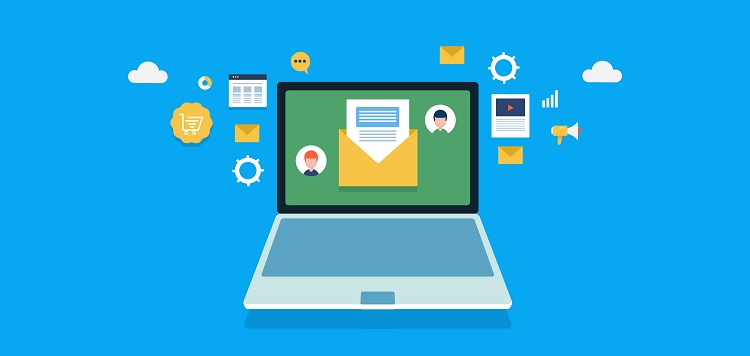Email marketing is an effective way to reach and engage with a targeted audience, increase brand awareness, and drive sales. With the rise of social media, many businesses may underestimate the value of email marketing, but it remains one of the most effective marketing channels for maintaining customer relationships and generating revenue.
In this article, we will explore the various benefits of email marketing, including affordability, targeting, tracking, and ROI. We’ll also look at the importance of building an email list and creating effective emails, as well as the different types of emails you can use to grow your business. Finally, we’ll discuss A/B testing and email marketing tools to help you streamline your campaigns.
Affordability
One of the biggest advantages of email marketing is its affordability. Unlike traditional marketing methods, email marketing doesn’t require a significant investment in print or broadcast advertising. The cost of sending an email campaign can range from free (if you have a small list) to a few hundred dollars for larger lists or more elaborate campaigns. This makes it an ideal option for small businesses with limited marketing budgets. Additionally, when compared to other digital marketing channels like paid search or social media advertising, email marketing’s cost per lead and cost per acquisition tends to be lower.
Highly targeted audience
Another advantage of email marketing is its ability to reach a highly targeted audience. With segmented email lists, businesses can tailor their messaging and offers to specific subsets of customers. For example, an online retailer could send a promotional email for running shoes to customers who have previously purchased athletic gear. This targeting can result in higher open and click-through rates since the content is more relevant to the recipient. Furthermore, by providing useful content and value to your email subscribers, you can build trust and long-term relationships with them.
Tracking and measuring results
Email marketing allows you to track and measure your results. With the help of email marketing software, businesses can monitor metrics such as open rates, click-through rates, conversions, and unsubscribe rates. Analyzing this data helps you understand how well your campaigns are performing and where you can make improvements. This information can then be used to optimize future campaigns, increase ROI, and achieve better results.
ROI
Email marketing has an average return on investment (ROI) of 42:1. This means that, on average, businesses can expect to earn $42 for every $1 spent on email marketing. This high ROI is due in part to email marketing’s ability to reach a highly engaged and targeted audience. Additionally, email marketing campaigns can be automated, saving businesses time and money on manual marketing efforts. By tracking and optimizing campaigns, businesses can further improve their ROI.
Building an Email List
Building an email list is essential for all businesses. An email list is a database of email addresses that you can use to send promotional messages or valuable content. One of the best ways to build your email list is to provide website visitors with an incentive for signing up, such as a free e-book or a discount code. It can also be useful to segment your email list into different groups based on their interests or behavior so that you can send more targeted messages.
Creating Effective Emails
Creating effective emails is key to the success of your email marketing campaigns. A well-crafted email can increase open rates, encourage click-throughs, and ultimately drive sales. Some best practices for creating effective emails include creating attention-grabbing subject lines, using personalization, providing valuable content, and including a clear call-to-action. Additionally, optimizing your email design for mobile devices can improve engagement rates.
Types of Emails
Using a combination of different types of emails can help build a highly effective email marketing strategy. Some common types of emails include welcome emails, abandoned cart emails, promotional emails, and newsletter emails. A welcome email is the first message a subscriber receives after signing up, and it’s an opportunity to set the tone for your relationship. Abandoned cart emails are sent to customers who have added items to their cart but haven’t completed the purchase, to encourage them to come back and complete the sale. Promotional emails can be sent to announce sales, discounts, or new products, while newsletter emails can be used to provide valuable content such as how-to guides or industry news.
A/B testing
A/B testing is a powerful technique that allows you to test different elements of your email marketing campaigns to see which perform best. This testing can include subject lines, images, calls-to-action, email design, or even the time of day you send your emails. By testing different options, you can optimize your campaigns for better results, increasing open rates, click-through rates, and conversion rates.
Email marketing tools and software
Finally, email marketing tools and software can help you streamline your email marketing campaigns, automate processes, and track your results. Professional email marketing platforms like Mailchimp, Constant Contact, or HubSpot allow businesses to easily create and send emails, segment their lists, and track their performance. Additionally, these platforms can integrate with other marketing tools like social media management software to provide a more comprehensive marketing strategy.
Overall, email marketing remains a highly effective marketing channel for businesses of all sizes. Its affordability, targeting, and tracking capabilities, combined with a high ROI, make it an attractive option for reaching and engaging with customers. By building an email list, creating effective emails, using a combination of different email types, and testing different elements, businesses can optimize their campaigns for better results. Finally, by using email marketing software and tools, businesses can streamline their campaigns, save time, and money, and achieve their marketing goals.

